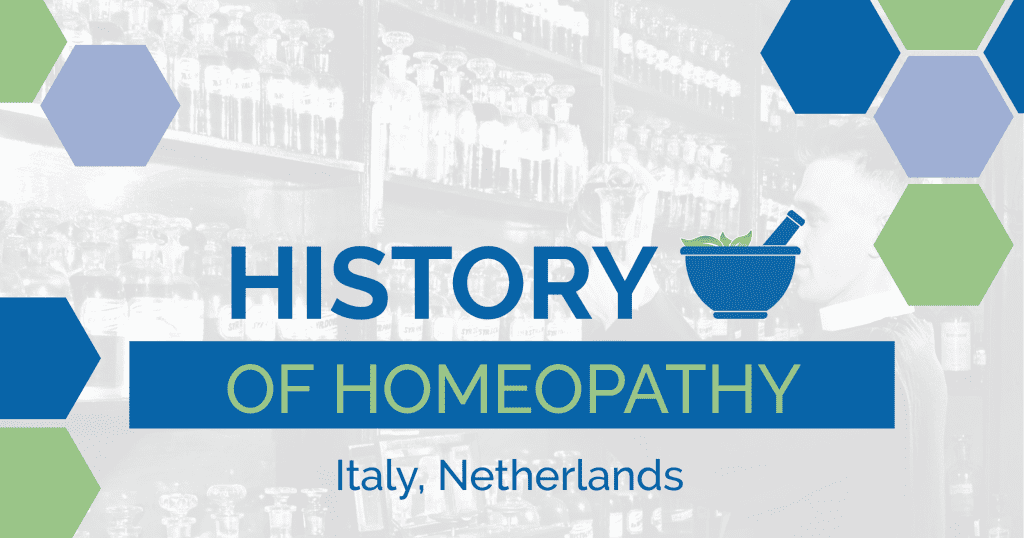Snapshots From There and Then: History of Homeopathy

In honor of AAHP’s 100th anniversary year, we look back at the history of homeopathy to find how this medical modality spread around the world. One also discovers startling vignettes of unexpected paths and outcomes. Readers may know much about homeopathy here and now, but we hope you find our “There and Then” series informative and interesting.
Italy
Homeopathy arrived in Italy with the military physicians of the invading Austrian Army in 1821. The first Italian physicians to take up homeopathy became teachers of many who introduced this medical therapy to France, Brazil, Spain, and Great Britain. After an amazing 15-year explosion of enthusiasm and interest in homeopathy, the number of homeopathic physicians swelled to 500 in Italy. Homeopathy’s strong unabated growth continued there for two centuries. Throughout the years, this medical specialty has been used to treat luminaries of Italy, including presidents of the republic and a number of Popes.
Before the end of the 19th century, the first homeopathic hospital opened. With just six beds (two reserved for those unable to pay), the hospital treated an average of 40 patients per year and provided free consultations annually to more than 1,800 patients. After 90 years, the hospital closed, primarily due to political pressures from the Fascist Party. Twenty-five years later, that original impulse led to the opening of a replacement hospital, which also serves as a teaching center affiliated with the Torino Pharmacy School.
A number of regions now have homeopathic outpatient and in-patient clinics. There are now more than 5,000 doctors using homeopathy; some insurance companies reimburse for homeopathic medical expenses with an estimated 5–6% of the population using homeopathic medicines.
Netherlands
In the Netherlands, the first practitioners arrived in 1834 — seven years after the Organon was available in Dutch. Only a year later in 1828, an original Dutch book on homeopathy was published. Dutch-born Clemens Von Böenninghausen moved to Germany yet was responsible for teaching many of the first generation of Dutch homeopathic practitioners. However retail consumers, rather than healthcare providers, has long been the primary market. A 1931 commentary states that there were 35 practitioners and 725 homeopathic pharmacies and reads, “the laity, knowing what they want, have taken the matter into their own hands, and aided by their family manuals, are treating themselves.” It goes on to say that physicians who come [to the Netherlands] have to be good because patients “would hardly be satisfied with an imitation or pretense to knowledge.”
There are currently about 400 medical doctors registered as homeopathic practitioners throughout the Netherlands. However, non-licensed practitioners are permitted, within certain limits, to treat patients based on the patient’s freedom to choose their therapist. The country has a complex system of private and public health insurance. Public insurance covers about 60% of the population and 14 of the 40 public funds pay for homeopathy practice. The ratio of private health insurance companies is far higher: 34 of the 63 private companies cover homeopathic treatment.
The country has long lasting ties with the practice of homeopathy: an association founded in 1886 to promote homeopathy is still active; the association for medical doctors practicing homeopathy was begun in 1898 and continues to this day; and a homeopathic hospital founded in 1906 still operates. A homeopathic drug company began operation in 1913. Today as a part of VSM, it is one of the country’s few domestic manufacturers.
References:
https://hpathy.com/homeopathy-papers/history-in-italy/
http://www.omeoto.it/en/istituto/ist_history.html
https://www.wholehealthnow.com/homeopathy_pro/netherlands.html
